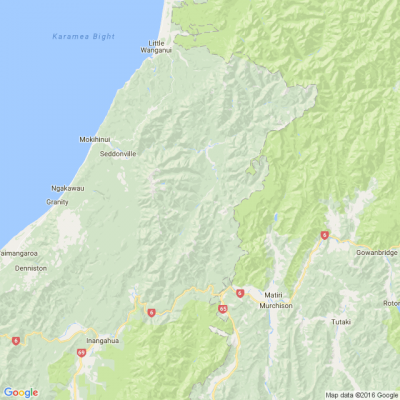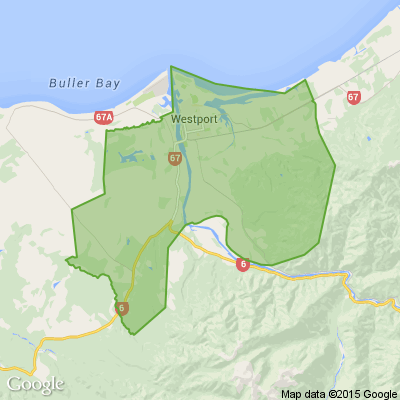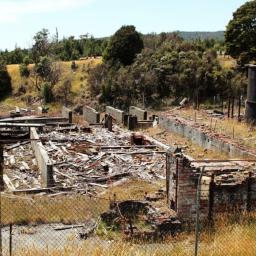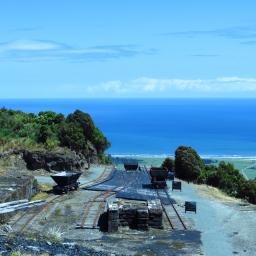Level of contamination ‘not known’ in about 70% of West Coast sites
By local democracy reporter Brendon McMahon:
There are still big gaps in the knowledge about the number of contaminated and environmentally hazardous sites on the West Coast.
The West Coast Regional Council's Hazardous Activities and Industries List (HAIL) identifies 533 sites across the region.
A new report by council says the presence or extent of contamination is "not known" for 70% of the sites.
At this stage council staff resources dedicated to HAIL and contaminated work represents about one half-time staff member, annually, the report said.
The sites represent a range of past activities and industries in the region.
The most common are: service stations (40%), landfills (10%), power substations (5%), previous mining exploration (4%), and previous gas works (4%).
Councillor Peter Ewen has repeatedly called for the region's HAIL list to be brought up to speed and thanked council staff for the updated list.
"It's very good to have this (but) there are a number of concerns," he said.
"The word that springs up in this report is a lot of sites have been 'assessed' but a lot haven't."
Ewen said the council should be seeking external funding to get a better handle on the scope of hazardous sites across the region, including former rubbish dumps.
"We've got to get some significant financial assistance to address this, and I think we should be accessing that."
The council HAIL register report included additional information from the Department of Conservation noting that it had 301 hazardous sites under its administration.
Only 48 of these were already included in the council list.
DOC-managed contaminated sites were typically former coal or gold mine sites.
Ewen asked the council draft a letter to the Director General of DOC to address:
* The department's work programme, resources and funding dedicated to its West Coast HAIL sites;
* That DOC should inform the council of any discharges occurring from their sites, "that are not already consented";
* Evidence of any Government funding received by DOC to deal with contaminated West Coast sites.
Ewen said the region did not want the spectacle of another Fox Glacier dump disaster.
"It's an issue that is not going to go away if we ignore it. Another day, it's another dump that gets washed away. We've got over 300 of the them, and most are not consented," he said.
"The thing I'm concerned about is the guardian of the environment, DOC, has a lot of these sites. They must know where they are."
The council agreed on April 9 to adopt Cr Ewen's recommendations.
DOC has been approached by LDR for comment.
Council science manager Jonny Horrox said council had to "give effect" to the national legislation on the risk contaminated land poses.
He said council was required to identify sites that posed or might pose health risks. This was to manage the risk appropriately on behalf of the community for land use changes or proposed earthworks.
Horrix said of the 301 DOC sites, about 48 were already listed by council.
* Eight are within the department's national 50 high risk sites;
* The presence or extent of contamination was unclear for the majority of DOC sites;
* The DOC sites represented a range of activities and industries in the region, "but mining is the main HAIL activity for 80% of sites.
Horrix said various terms had previously been used but HAIL was best understood.
"Sites are on the register as a precautionary measure ... contaminants may or may not be present."
However the HAIL register was to inform future decisions around site use, he said.
"It does not mean all sites are contaminated."
Photos:
* The former Prohibition Mine site at Waiuta cost the Department of Conservation $2.6 million to clean-up from 2016-18 of what had been assessed as the most toxic mine site in New Zealand and the second most arsenic-contaminated site in the world. (Department of Conservation)
* The top of the former Denniston Incline on the Denniston Plateau north of Westport. The area is one among many historic mining sites managed by the Department of Conservation on the West Coast where there is a legacy of contamination such as acid mine drainage. (Brendon McMahon)
Poll: Are our Kiwi summer holidays helping us recharge, or holding the economy back? ☀️🥝
There’s growing debate about whether New Zealand’s extended Christmas break (and the slowdown that comes with it) affects productivity.
Tracy Watkins has weighed in ... now it’s your turn. What’s your take? 🤔

-
72.8% We work hard, we deserve a break!
-
16.1% Hmm, maybe?
-
11.2% Yes!
Secure your homes over summer
Police are reminding people to keep their homes secure during the summer months.
Inspector Glenda Barnaby, Christchurch Area Prevention manager, says daytime burglaries are just as common as nightime burglaries.
“Burglaries can be committed at any time of the day, and coming into warmer months there is more opportunity for thieves."
"Although a majority of burglaries involve forced entry through windows and doors, we are starting to see more incidents at insecure premises. Police deal with cases where burglaries are committed in broad daylight, sometimes even while the victim is at home. Good weather means open doors and windows, which makes homes more vulnerable to burglars.”
Inspector Barnaby says there’s a few things people can do to reduce their changes of a burglary being committed.
⚠️ If you’re going outside for gardening, relaxing in the sun, or working in the garage, take a moment to lock your doors and secure your windows first.
⚠️ Do the same at night when you go to bed - keep your doors and windows secure and close your curtains. Fitting window stays means you can get a breeze coming through, while keeping your windows secure.
⚠️ Get to know your neighbours - let them know if you’re going away and look out for one another.”
If you see any suspicious activity, people or vehicles in your neighbourhood, don't hesitate to contact Police.
If you witness or suspect any illegal activity, please call 111 if it is happening now, or make a report through 105 either online or over the phone, if it is after the fact.

Brain Teaser of the Day 🧠✨ Can You Solve It? 🤔💬
How many balls of string does it take to reach the moon?
(Peter from Carterton kindly provided this head-scratcher ... thanks, Peter!)
Do you think you know the answer? Simply 'Like' this post and we'll post the answer in the comments below at 2pm on the day!
Want to stop seeing these in your newsfeed? No worries! Simply head here and click once on the Following button.









 Loading…
Loading…